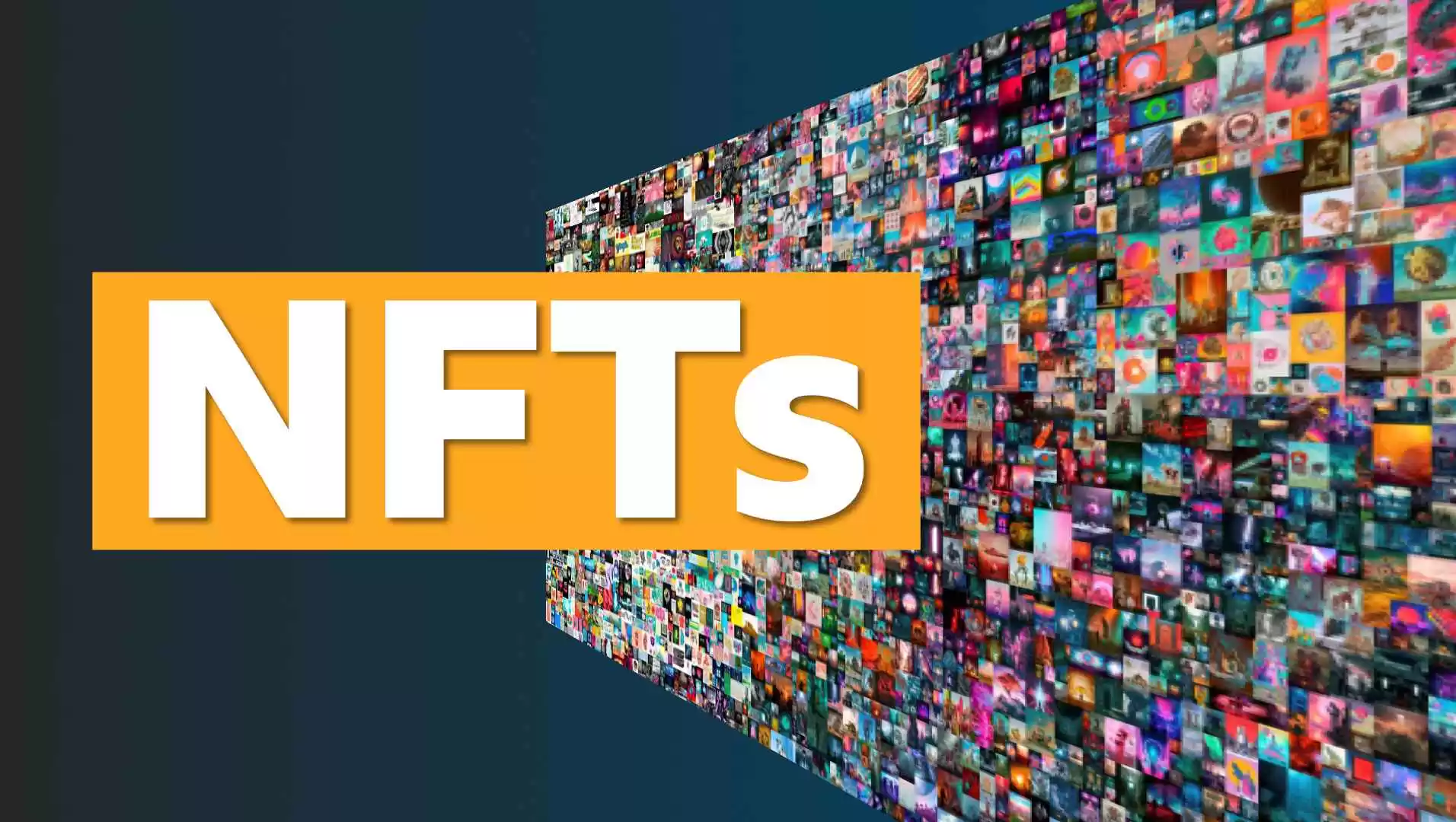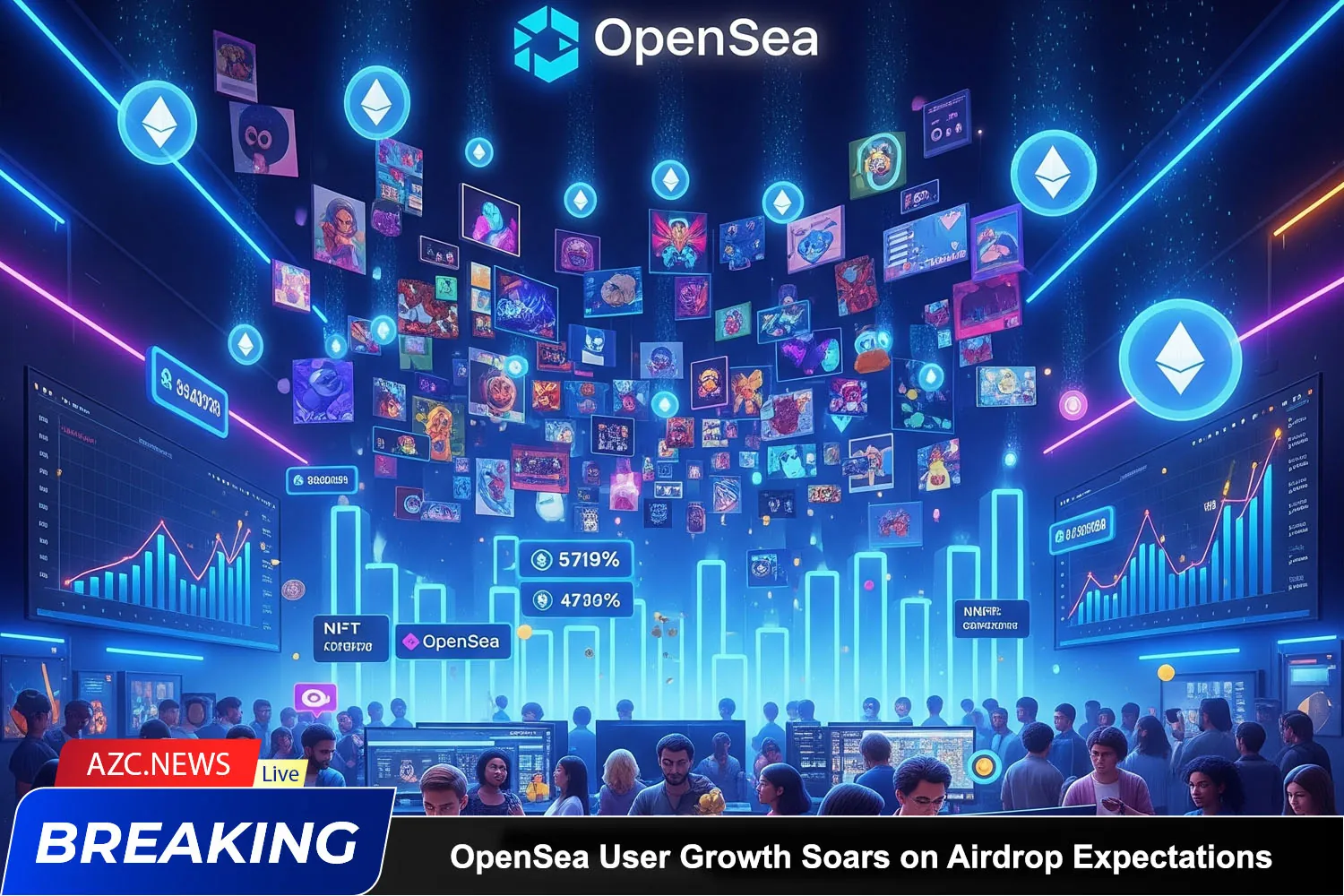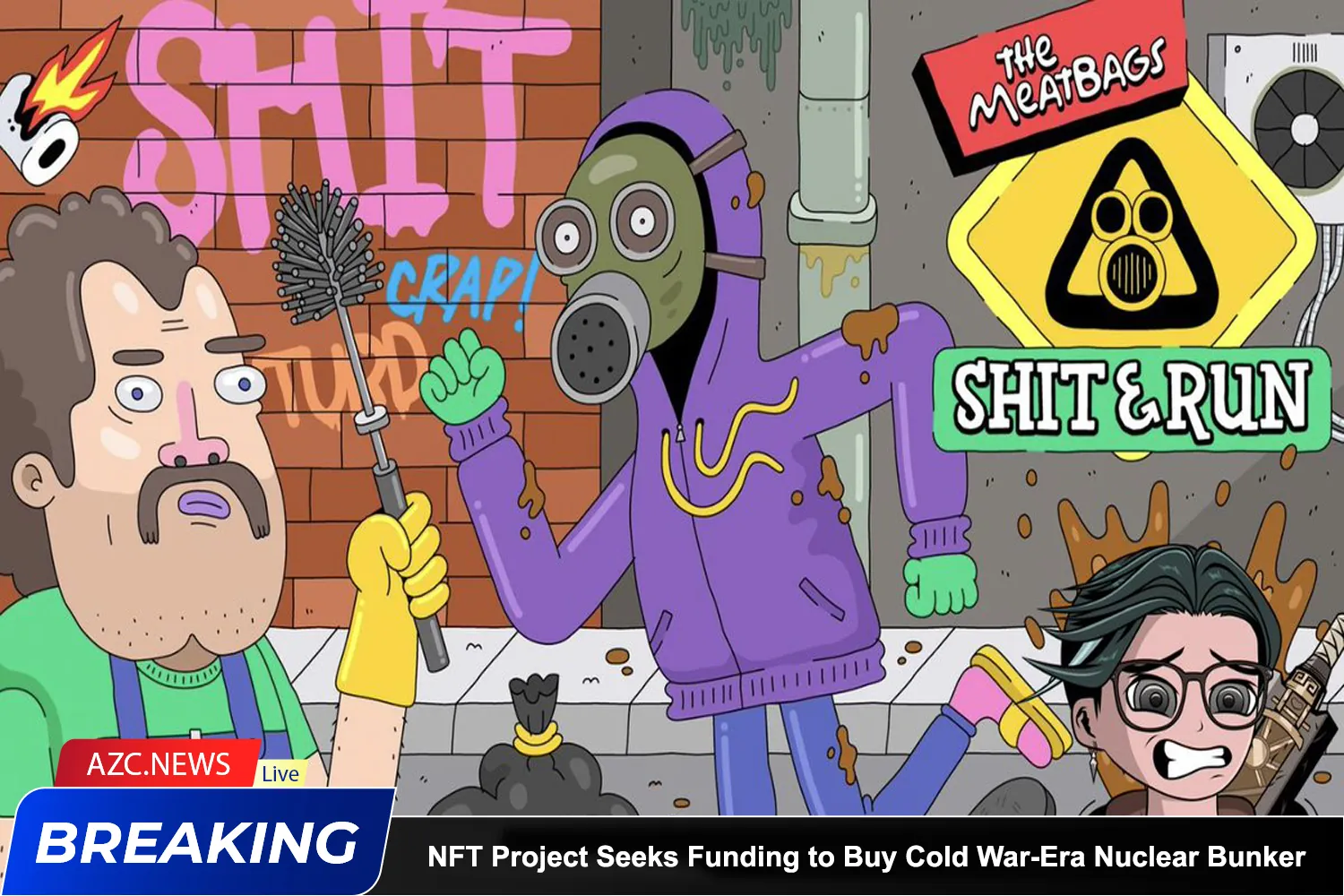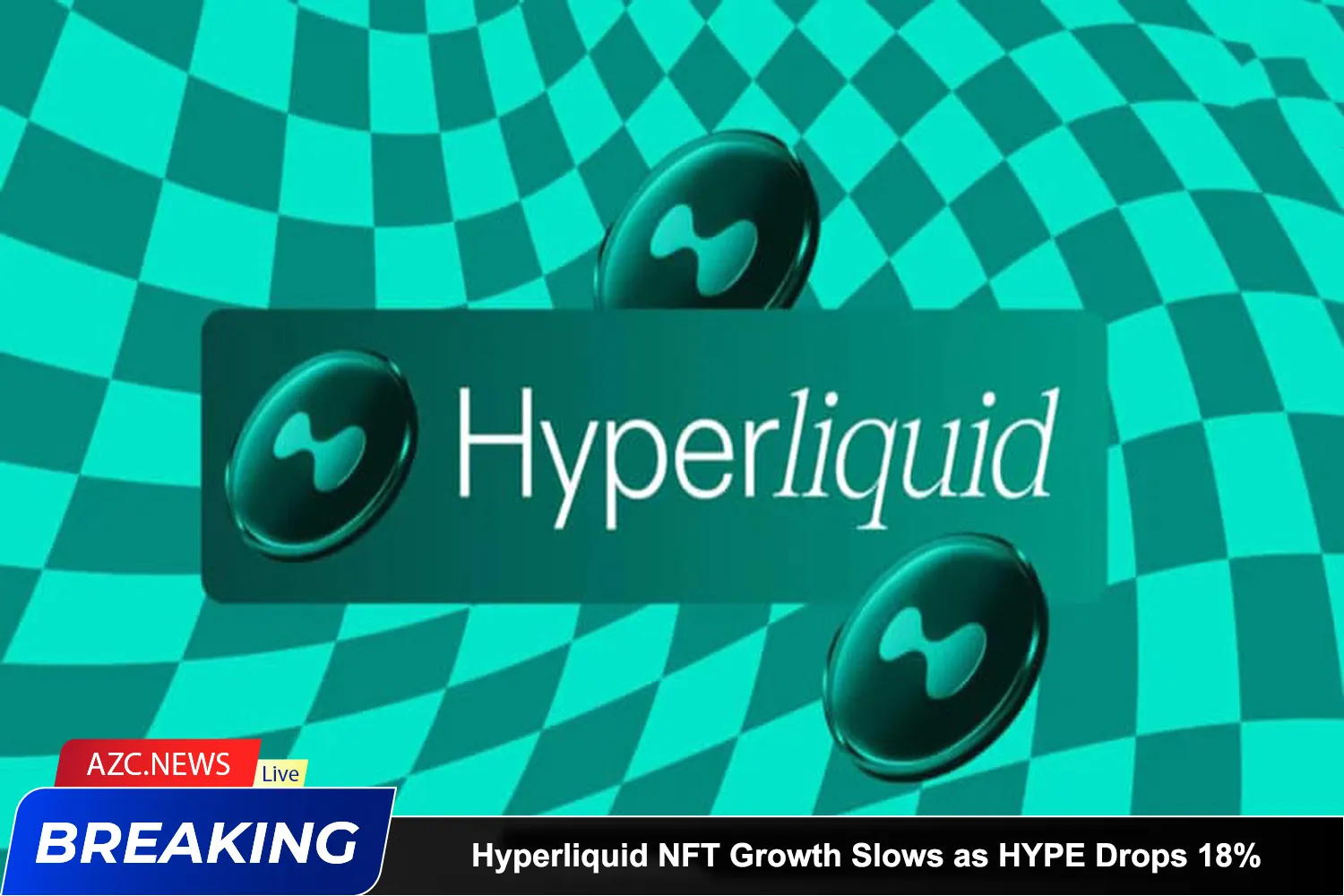What is an NFT?
The cryptocurrency community’s ability to innovate is surpassed only by its influence in setting new trends, as evidenced by the rise of NFTs. But what do NFTs stand for? NFTs refer to nonfungible tokens, which are digital objects that are verified on the blockchain and hold features such as uniqueness and non-interchangeability. They can fall into pretty much any category but are most notably appearing in the form of art, music and as items in blockchain-based video games and video.
One particular area that NFTs have taken by storm is the art world, where digital tokens are selling for tens of millions of dollars at major auction houses and beyond. Budding artists who would once post their work for free or sell it cheaply are realizing that they can cash in on their talent through the use of blockchain technology and NFTs.
It’s still the early days for nonfungible tokens, which were thrust into the spotlight in 2017 with a decentralized application (DApp) called CryptoKitties, where users can buy, trade and collect virtual cats.
After the NFT market ballooned by close to 300% in 2020 to more than $250 million year-over-year, these nifty digital assets have captured the imagination of traders and creative types alike. Another sign of growing adoption is the number of NFT wallets on which NFT transactions have occurred, nearly doubling in 2020 to more than 222,000 YoY.
You don’t have to be in the crypto space too long before you hear about NFTs — you don’t even have to be in the space at all. When you do, it probably won’t be long before you decide to go down the NFT rabbit hole like the rest of the community, either in an attempt to score a big sale or to scoop up some digital art to diversify your portfolio. But before you do that, it helps to have a grasp on the NFT ecosystem and what it is all about.
How do NFTs work?
NFTs differ from ERC-20 tokens such as DAI and LINK in that each token is unique and cannot be divided. NFTs allow for the assignment or claim of ownership of any unique piece of digital data, which can be tracked using Ethereum’s blockchain as a public ledger.
As a digital or non-digital asset representation, an NFT is created from digital items. An NFT could, for example, represent real-world items like legal documents, signatures or digital art like videos or music. So, what is NFT digital art? NFT digital art is an Ethereum-based asset that reflects the artwork’s certificate of ownership and authenticity.
At any given time, an NFT can only have one owner. The uniqueID and metadata that no other token can replicate are used to manage ownership. Smart contracts, which assign ownership and govern the transferability of NFTs, are used to create the uniqueID and metadata.
When someone generates or mints an NFT, they are executing code from smart contracts that follow various standards, such as ERC-721. This data is stored on the blockchain, which is where the NFT is handled.
Furthermore, NFTs have some unique properties as follows:
NFT use cases
Real-world items such as artwork and real estate can be represented with NFTs. These real-world tangible goods can be “tokenized” to make them more efficient to buy, sell, and trade while also lowering the risk of fraud.
Art
The most frequent NFT crypto application is programmable art, combining creativity and technology uniquely. Various limited edition artwork pieces are now in circulation. Surprisingly, they enable programmability to make changes in diverse situations. For example, smart contracts and oracles can let artists create visuals that can react to price swings in blockchain-based digital assets.
Fashion
With the promise of benefits to all supply chain partners, blockchain has blended effortlessly into the world of fashion. Consumers may simply check the ownership information of their purchases and accessories online, eliminating the danger of counterfeiting. For example, users might simply scan a QR code found on price tags for garments and accessories in the form of an NFT.
Licenses and certifications
NFT use cases can also provide significant benefits for confirming licenses and certifications. Successful students are typically issued course completion certificates in either digital or physical format, similar to any other degree or license. However, before a corporation or an institute offers a place to someone, universities and employers want replicas of the course completion document as references.
Admins could save a lot of time using NFTs to access such licenses. NFT-based certificates and licenses relieve the load of record checking and verification. As a result, the technique makes it easy to keep track of proof of course completion or licensing.
Sports
Some of the most serious concerns impacting the sports industry are counterfeit tickets and goods. Blockchain is the ideal solution for resolving such difficulties with few obstacles. Blockchain technology’s immutability aids in the prevention of counterfeit collectibles and tickets.
Gaming
NFTs have also left their mark on the cryptocurrency gaming industry, already making an impact on the overall gaming scene. CryptoKitties was the first to combine the features of gaming with NFTs in 2017, issuing digital cats on the blockchain and giving users the ability to interact and trade with them. The model was so successful that it caused the Ethereum network to be clogged by a high volume of transactions for a short while.
Since then, gaming has become a key use case for NFTs, which isn’t too much of a stretch given the nature of in-game sales for products like skins and more that has already gripped the traditional market.
When it comes to NFTs, there has been a crossover between traditional gaming companies and decentralized startups, as both sides look to capitalize on digital cards, artwork and even fashion on the blockchain. NFTs fit gaming like a hand in a glove, and the pairing is sure to continue to disrupt the industry as gamers seek not only to score as competitors but also as investors.
NFTs vs crypto and fiat currencies. What’s the difference?
The value of NFTs revolves around the nonfungible nature of these digital assets, which is the feature that sets them apart from cryptocurrencies, as NFTs and cryptocurrencies are not the same things. Each NFT has its own unique set of attributes — such as size, scarcity, creator, etc. — and therefore cannot be interchanged with another asset.
On the contrary, Bitcoin (BTC) is a fungible asset. If you are fortunate enough to own 1 BTC and you exchange it for another 1 BTC, nothing has changed. You still have the same amount of Bitcoin to use or hold, or “hodl,” onto.
The same holds true for fiat currencies, such as the U.S. dollar or the euro, and other examples of fungible assets. One dollar or euro note is interchangeable with any other dollar or euro note, regardless of characteristics, such as the serial number or whether you’ve got the note in your pocket or a bank account. Where you get into a gray area is if you have a coin that’s considered to be a collector’s item, in which case this item fits the bill as a nonfungible item.
Another real-world example is baseball cards, which are more closely related to nonfungible tokens, considering one card is not equal to another. Incidentally, the concept of nonfungible tokens is not lost on Major League Baseball (MLB), the National Basketball Association (NBA) and other sporting organizations, individual teams and athletes.
How much are NFTs worth?
In theory, anyone can tokenize their work and sell it as an NFT, but recent headlines about multi-million-dollar purchases have piqued attention.
For instance, Grimes sold some of her digital paintings for more than $6 million. Art isn’t the only thing that is tokenized and sold. With bids reaching $2.5 million, Twitter CEO Jack Dorsey sponsored an NFT of the first-ever tweet.
Sorare, a French company that offers football trading cards in the form of NFTs, has raised $680 million (£498 million). But, as with crypto-currencies, there are concerns regarding the NFT’s environmental impact.
Why are NFTs getting so much attention?
NFTs first appeared in the cryptocurrency industry in 2012/2013, depending on how wide of a net you cast for the category, though they didn’t make their way to the Ethereum blockchain until 2017. Since then, however, most tokens live on the Ethereum blockchain. While Ethereum isn’t the only blockchain on which the tokens can be built and traded, it is the most popular. The main standard for NFTs on the Ethereum blockchain is ERC-721.
When a transaction occurs on Ethereum, the wallet starting that process must pay what’s known as a gas fee to the miners for their work. The problem with nonfungible tokens on the Ethereum blockchain is that it is an expensive network, and these gas fees can reach unreasonably high numbers when the demand to make transactions is high.
The high prices are a function of the popularity of NFTs, coupled with the lack of scalability of the current version of the Ethereum blockchain. This scalability issue is poised to change as the project moves from the proof-of-work (PoW) consensus algorithm to proof-of-stake (PoS), in what is known as the shift to Ethereum 2.0 (Eth2). Until then, token creators have to decide whether the lofty fees are worth it, or if they should give another blockchain a try, or abandon NFTs altogether.
Even though they’ve been around since 2012, NFTs have recently become popular due to celebrity connections and exclusivity. For example, before his fight with Floyd Mayweather, Logan Paul offered supporters the chance to win first-edition packs of Pokémon cards if they purchased his NFT collector card.
In what has been dubbed a “gold rush,” NFT trading sites like OpenSea are experiencing a surge in adoption. Is this, however, merely speculative hysteria, with a bubble that will inevitably burst as high-powered people try to cash in on intangible assets?
While overinflation of value has long been a part of the art world’s business model, NFTs may provide new options for small artists. One of the advantages of NFTs is that royalties are always paid to the creator, even if the value of the artwork or music increases when it is resold.
We may start to imagine a world without the money-grabbing middlemen of corporate labels in the music industry, where artists make the majority of sales.
It’s also a potentially life-changing tool for content creators who engage in meme culture, for example, to monetize artistic avenues that their parents most likely dismissed as a “waste of time.” All hail a new era of monetized, digitized comedy.
NFTs create waves, whether you love or despise them, whether you want to buy one or add your music and artwork. So many people are keeping an eye out for get-rich-quick opportunities, or looming calamities, that may occur with a concept yet in its infancy. It’s worthwhile to pay attention.
What makes an NFT valuable?
A factor called scarcity will undoubtedly raise the value of an NFT, whether it be art or a digital collectible. But what is the relationship between monkey JPEGs and NFT scarcity? NFTs can be highly expensive (or valuable) depending on who you ask because they somehow achieved the impossibility of introducing scarcity into the global digital market. So an NFT is not only a way to own an image instead of purchasing one.
Buying NFTs means purchasing a token that will always point to that particular image or digital item inscribed on a blockchain. That said, users can inflate its price by limiting the supply of a digital item when they mint it as an NFT.
Will NFTs transform the art world?
NFTs will certainly transform the art world. For instance, prehistoric cave art dates back as far as the Lower Paleolithic Era, or the Old Stone Age, somewhere between 290,000 BCE and 700,000 BCE. Art has come a long way from cave paintings and rock carvings, however, and NFTs are giving creative types new ways of generating income from their work and capturing new followers.
If you are wondering how nonfungible tokens have changed the art world already, look no further than Christie’s, an auction house with a history of more than 250 years. That is where digital artist Mike Winkelmann, aka Beeple, famously sold one of his pieces — “Everydays: The First 5000 Days” — in a JPG format for $69 million. It was a sign of the times that proved just how much the blockchain space has influenced modern art.
This price tag places Beeple among the top three priciest living artists in terms of the amount generated through an auction. And while you may see NFTs hanging in a museum, like some of Christie’s other famous sales, you can be assured that the owner gets to enjoy bragging rights while the art can be verified on the blockchain. Beeple’s story is also significant because his participation in the fine art world only began when he stumbled upon NFTs, showing how quickly a new artist can become a phenomenon in this age of digital art.
Once Christie’s announced that it was auctioning off a Beeple NFT, Asian investors were first in line, with nearly one-fifth of the 33 bidders for the digital art coming from the region. Singaporean cryptocurrency investor “MetaKovan” ultimately prevailed in the auction.
Beeple is not the only one making it big from NFTs. Take CryptoPunks, a collection of 10,000 24×24-pixel eccentric characters — including zombies and aliens — built on the Ethereum blockchain. CryptoPunks, which claims to have created the maiden NFT on Ethereum and served as an inspiration for the market, has caught on like wildfire.
Like Beeple, these digital artists have made it big from their NFT artwork, including the sale of nine portraits that went for close to $17 million — also at the Christie’s auction house. The limited-edition nature of CryptoPunks makes them so valuable. For example, CryptoPunk 635, which was part of the group of nine, dons sunglasses and has a blue face. It is one of the mere nine alien portraits in the lot.
Not to be outdone, musician Grimes jumped on the NFT bandwagon, making roughly $6 million from selling a collection of digital artwork and videos. Her top piece was a video dubbed “Death of the Old,” of which there is only one of its kind. This NFT alone went for close to $389,000.
How are NFTs reinventing the digital world?
Nonfungible tokens appeal to collectors, investors and traders alike. They are a digital version of some product, like a piece of artwork, that gives the owner the certified version of that asset. This goes a long way in places like the art world, where owning the real deal — the official, unique version of an item — is much more valuable than owning a copy of it.
Take the statue of David, for example. Would you rather own the original sculpture or a perfect copy? The answer to that question is subjective and depends on how you value artwork. The same concept holds true for NFTs, where the owners of these digital assets whose proof of ownership is verified on the blockchain hold the belief that the asset will either increase or add immeasurable value to their collection.
Fungibility, or the lack thereof, is at the core of an NFT’s value which is reinventing the digital world. Like the art world itself, NFTs capitalize on the idea of an auteur or creative genius giving monumental value to an object.
There are numerous marketplaces on which users can issue or buy nonfungible tokens. Doing so generally requires possessing a digital wallet along with digital currencies to direct toward the purchase of the token that you want. There are also various ways to buy such tokens, either from a direct sale or an auction. Buying NFTs does not only happen in digital platforms but also in several renowned auction houses like Sotheby’s, which can sell NFTs, purchased with crypto.
How to buy and sell NFTs?
The majority of NFT marketplaces operate similarly to an auction house. You put a bid and wait to see if you are the winner of the NFT of your choice. Some sites, like eBay, offer “Buy Now” options, where NFTs can be purchased for a set price. OpenSea.io, SuperRare, Foundation.app, Rarible, and Mintable are examples of NFT marketplaces.
It’s important to note that each marketplace has its own set of crypto wallet requirements. There is currently no single wallet that can be used on all sites. MetaMask is the most widely used crypto wallet, although others include Formatic, Torus, Coinbase Wallet and Portis.
Trading an NFT you’ve previously acquired and selling an NFT you’ve minted are the two ways to sell NFTs. First, there will be fees associated with selling your non-fungible token, just as there will be fees associated with minting an NFT. This will cover gas fees and marketplace-determined final sale service fees.
Previously acquired NFTs can be resold on the secondary market as can any other asset. To do so, make sure the NFT in question is in your crypto wallet and listed for sale on your preferred marketplace. While the value of your NFT may increase over time, the long-term or even short-term worth of NFTs cannot be guaranteed.
Depending on the service, you can either set the “Buy Now” price or specify the auction rules, such as the reserve price to sell a minted NFT. In some situations, royalties may be paid each time your NFT is sold in the future. While the value of your NFT may increase over time, the long-term or even short-term worth of NFTs cannot be guaranteed.
Are there any issues with NFTs?
Just because there is no physical safe from which to steal NFTs doesn’t mean that security isn’t an issue. Similar to the cryptocurrency industry, itself, the NFT industry remains a nascent market in which developers are working out some of the kinks and users are getting educated.
In the interim, there are sure to be some bumps in the road. NFTs have made it into the limelight even as the architecture is still being built, which could be a recipe for disaster if it falls into the wrong hands.
Newbies in the cryptocurrency industry may still be struggling to send Bitcoin (BTC) or Ether (ETH) to the right addresses. With the rise of NFTs, they now have to learn about MetaMask wallets and the various blockchains on which NFTs can be built. It can all be overwhelming to the new user and could lead to mistakes that cannot be undone in the decentralized world where there is no third party to return funds or products to their rightful owner.
Meanwhile, there are also security issues at play. While the immutable nature of the blockchain is meant to prevent fraud, that hasn’t stopped scams from happening in the NFT space. Bad actors find a way to infiltrate budding markets, and NFTs have been no exception, including when it comes to copyrights.
According to social media accounts, scam artists managed to capture the tweets of some accounts, and turn around and sell them as NFTs of their own. While the industry caught wind of this behavior and Twitter has since cracked down on it, it is an example of the scams that can still run rampant in a budding market.
Future outlook
The NFT market has achieved much of its impressive growth over one year. In 2020, most of the popular NFT platforms weren’t even around yet, while the start of 2021 was met with an unprecedented surge in activity and trade volume. Even if this trend continues at a slower pace, the overall rate of adoption of NFTs (like crypto art) will still likely be unprecedented in years to come.
While nonfungible tokens can be difficult to value, features such as uniqueness, tradeability, talent and whether the original artist is behind the sale all play into the price. The next wave of the NFT market could see the tokens make their way into yet another craze that has taken the cryptocurrency market by storm: decentralized finance (DeFi).










